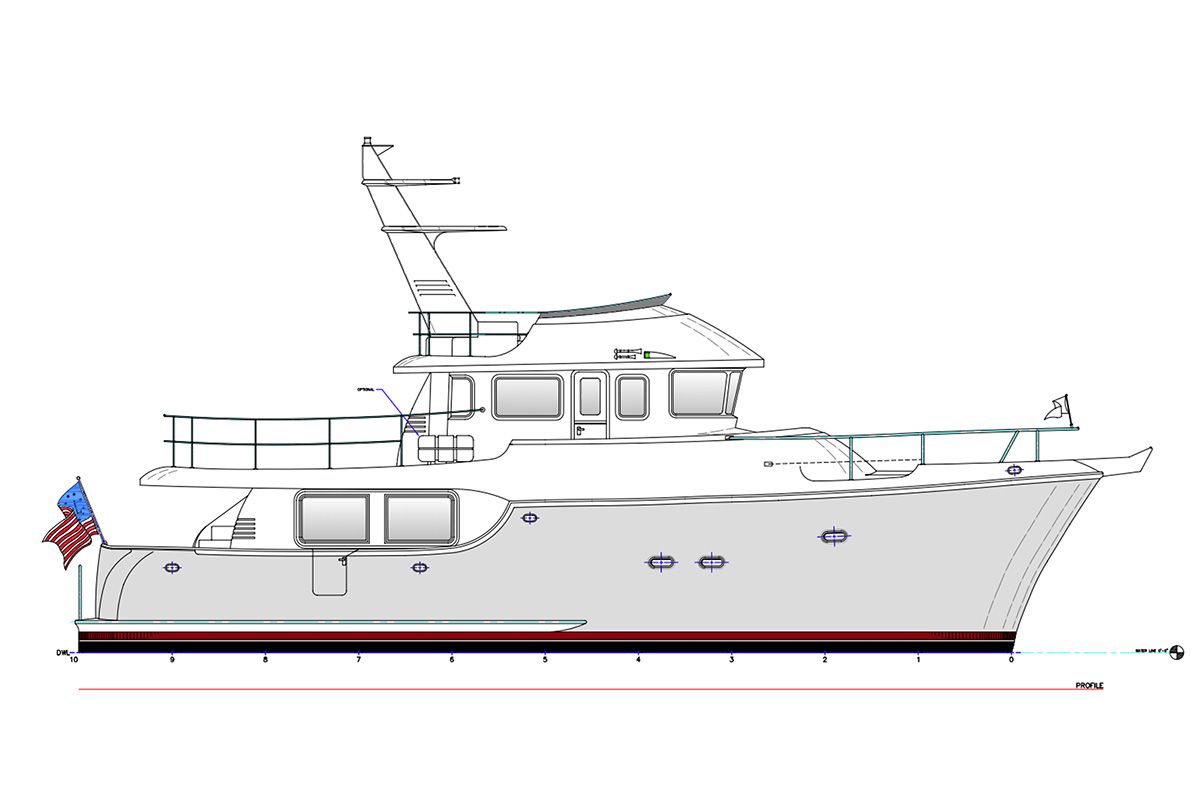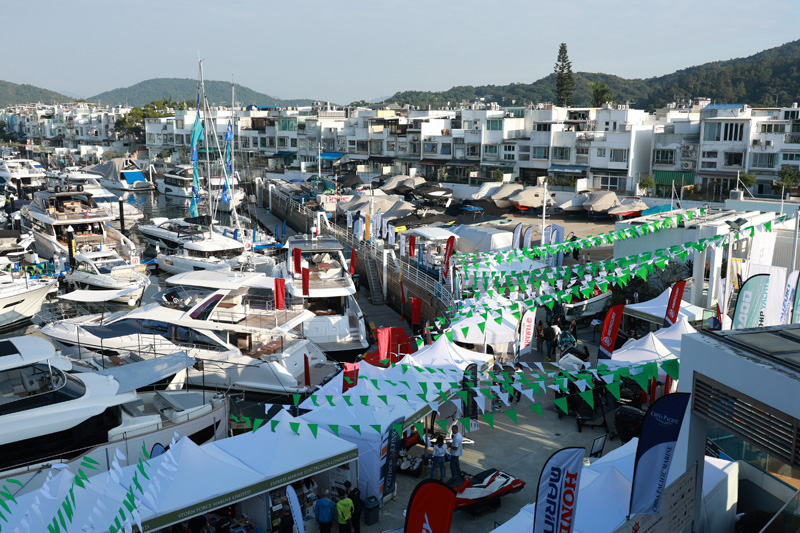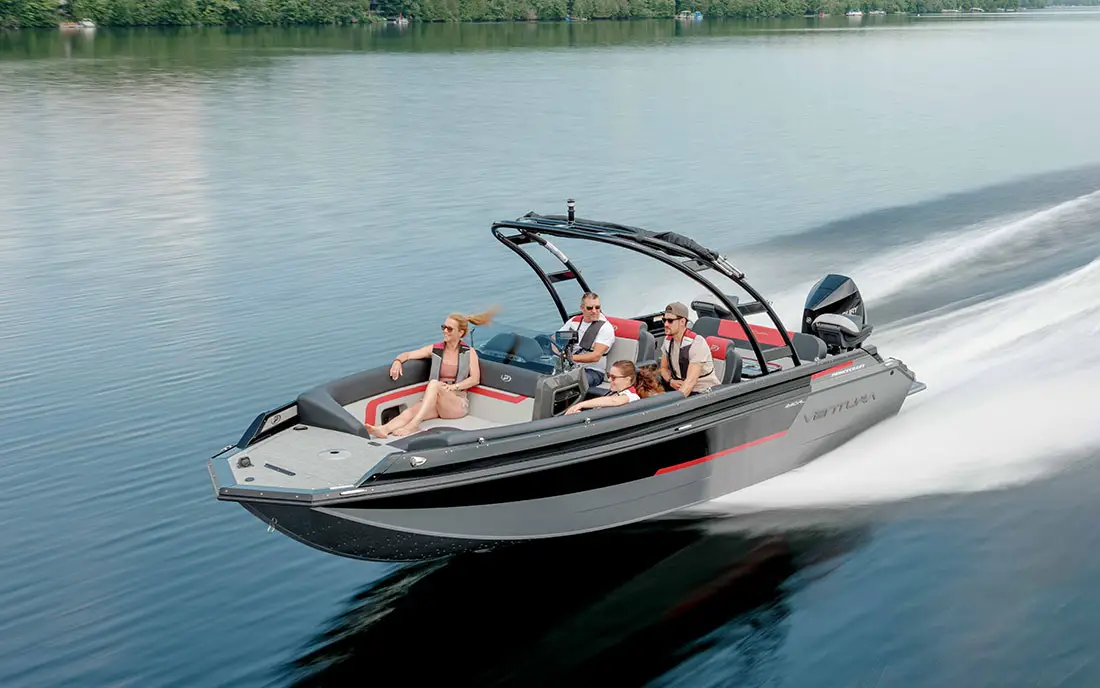Duck Boat Safety Tips and Best Practices
Duck boats are specialized boats designed for waterfowl hunting. These boats are crafted to blend into natural environments and handle rough waters, making them essential tools for successful duck hunting.

From car-toppers to mud motors, different styles cater to specific needs, whether it’s small ponds or open sea.
The history and evolution of duck boats show a trend towards increased durability and functionality. Modern designs often feature materials like fiberglass and include wave-cutting hulls and advanced camouflage. These features ensure safety and effectiveness, enabling hunters to reach their spots and stay undetected.

Choosing the right duck boat involves considering several factors. These include the type of water you’ll be navigating, your hunting style, and specific features like length and power options. Brands like TDB SeaClass offer various models to suit different conditions and preferences, catering to the diverse needs of waterfowling enthusiasts.
Key Takeaways
- Duck boats are essential for navigating various water bodies in duck hunting.
- Modern duck boats are durable and designed for safety and effectiveness.
- Choosing the right duck boat depends on water type, hunting style, and specific features.
History and Evolution of Duck Boats
Duck boats have a long history, starting as handmade canoes and evolving into advanced crafts used in waterfowl hunting and military operations. The changes in materials and design have significantly impacted their effectiveness and versatility.
Development Over the Years
Early hunters used handmade canoes made from timber to navigate marshes. These canoes were simple but effective for their purpose.
During World War II, the U.S. military developed the DUKW. This amphibious vehicle, also known as the "Duck," was used for transporting troops and supplies over land and water. About 20,000 DUKWs were produced during the war. Later designs started using aluminum and fiberglass materials to improve durability and reduce weight.

Modern duck boats come in various designs and materials. Aluminum boats are popular for their lightweight and rust-resistant properties. Fiberglass is also used due to its strength and ease of molding into different shapes. These advancements make contemporary duck boats much more versatile and durable.
Impact on Waterfowl Hunting
Duck boats revolutionized waterfowl hunting by providing hunters with better access to different hunting spots. Early hunters' handmade timber canoes allowed them to reach marshes where ducks and geese were abundant.

The introduction of more sophisticated designs like the DUKW allowed for safer and more efficient transport. This enhanced the hunting experience significantly. Modern aluminum and fiberglass boats add to this by offering stability, speed, and durability.
These advancements help hunters access remote areas that were previously difficult to reach. This has made duck hunting not only easier but also more efficient and enjoyable for enthusiasts.
Types of Duck Boats
Duck boats come in various types, each designed for specific environments and needs. The choice depends on factors like the water type, hunting style, and durability.
Layout Boats
Layout boats are small, low-profile vessels mainly used in open water. They are perfect for hunters who want to stay hidden while targeting waterfowl. The NXT GEN UFO Layout Boat is a popular choice known for its high-quality hull and comfortable layout.
Layout boats often have a flat bottom, making them stable yet easy to maneuver. They are typically made from materials like aluminum or fiberglass, which ensures durability and long-lasting use. An advantage of layout boats is their one-piece hull, which adds to their sturdiness.
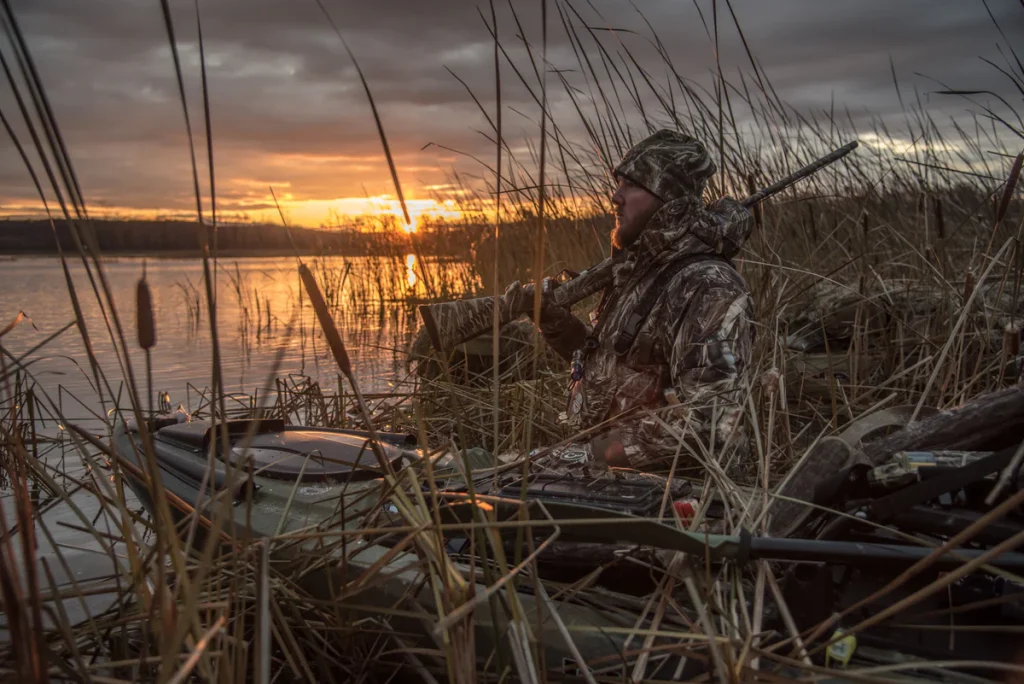
Marsh Boats
Marsh boats are designed for shallow water areas like marshes and swamps. These boats can navigate through dense vegetation and mud, making them ideal for marshy terrains. A good example is the Mud Boat with a 23 horsepower Vanguard long-tailed engine.
Marsh boats often feature a flat bottom, providing excellent stability and ease of movement in shallow waters. Made from materials like aluminum, marsh boats are durable and can withstand tough conditions. Hunters prefer marsh boats for their versatility and reliability in tricky environments.
Fiberglass Boats
Fiberglass boats are known for their lightweight and sturdy construction. These boats resist corrosion and are easy to maintain.
Fiberglass is often used to make various duck boat styles, including layout and marsh boats. The major benefit of fiberglass boats is their durability and low maintenance, which appeals to hunters looking for a reliable option.
These boats can be designed with a flat bottom or V-hull depending on the water conditions they will face. Fiberglass also allows for a smooth, sleek design, cutting through water more efficiently and providing a comfortable hunting experience.
Design and Structure
Duck boats are crafted to be highly functional, combining a sturdy hull with lightweight materials. This makes them perfect for navigating various water conditions. Below, the key aspects of hull design, boat capacity, size, and material durability are discussed.
Hull Design
The hull of a duck boat is designed to be shallow and durable. This shallow draft allows the boat to navigate through marshes, rivers, and timber with ease. A sturdy hull is essential in withstanding the tough conditions often encountered in these environments.
Many modern duck boats use a one-piece hull, which enhances durability and performance. Fiberglass and Kevlar-reinforced materials are frequently used to ensure the hull is both lightweight and strong. This combination of materials helps maintain the boat's balance and speed.

Boat Capacity and Size
Duck boats vary in size but typically range around 11 feet 10 inches to 15 feet in length. This size is ideal for accommodating one to three passengers plus gear and hunting dogs. Capacity is crucial, as it affects the boat's stability and speed.
For example, a boat with a driver, dog, and three passengers might reach speeds around 19 mph. Adjusting the load can significantly impact this speed. Proper boat capacity ensures not only safety but effective use during hunting trips.
Material and Durability
When it comes to materials, the choice heavily influences the boat's longevity and functionality. Marine or exterior plywood is commonly used, often with a fiberglassed bottom. Fiberglass provides a stiff and strong hull that withstands the test of time.
Some advanced designs even use Kevlar-reinforced materials, which add to the boat’s strength while keeping it lightweight. Durable adhesives and fasteners are necessary to maintain a watertight structure, keeping the boat safe in various weather conditions.
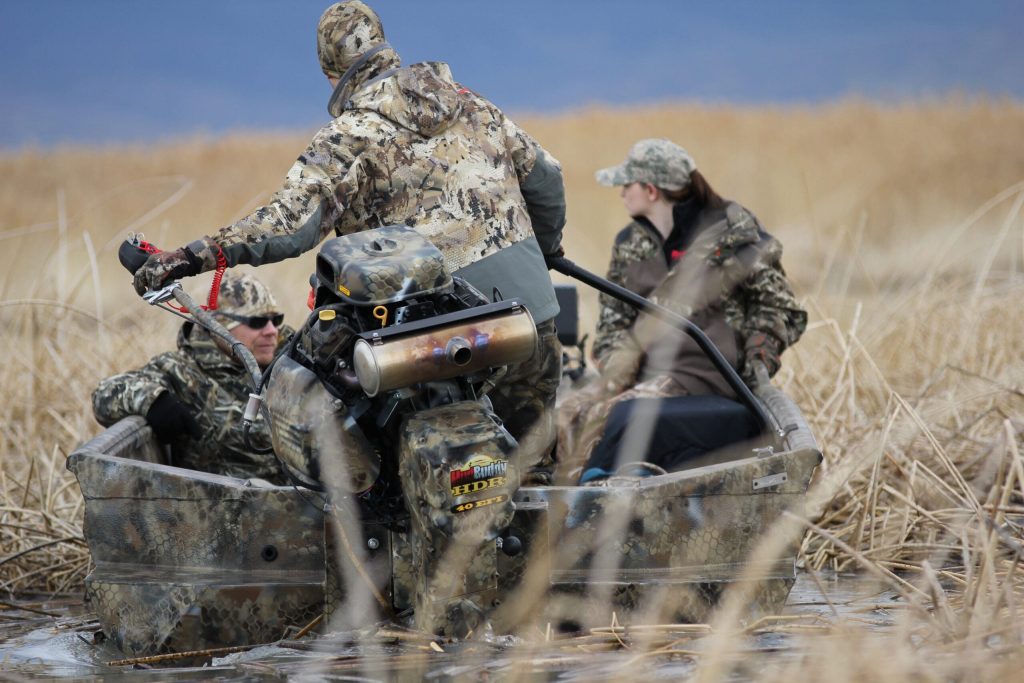
Functionality and Features
Duck boats offer various features that enhance storage, comfort, and customization. Understanding these aspects can greatly improve the hunting experience and overall usability of the boat. https://www.youtube.com/embed/ZlsLA8xo-PY
Storage Options
Storage is crucial in a duck boat to keep gear organized and accessible. Most duck boats have built-in storage like dry storage compartments to keep items safe from water.
Gun boxes and gun racks provide secure locations for firearms, while shell holders keep ammunition within reach. Additional storage spaces for decoys and other hunting gear are often included. Adjustable seat bases can also offer storage underneath, maximizing space efficiency.

Comfort and Concealment
Comfort and concealment are key for hunters who spend long hours in their boats. Comfortable seating with padded seats and adjustable bases ensure a pleasant experience.
Concealment is achieved through features like camouflage paint and materials that blend with the environment. Boats often feature layouts designed to keep hunters low and hidden from ducks. Concealment blinds and boat covers are also commonly used to enhance this aspect.
Customization and Accessories
One of the best aspects of duck boats is the ability to customize. Duck hunters can add many accessories to fit their specific needs, such as build your own gun racks, shell holders, or specialized seat bases.
They can also choose high-tech features like LED navigation lights or theft-resistant housings for essential equipment. Other customization options include adding decoy storage systems or comfort upgrades to improve usability and functionality.
Duck Boat Motors
Duck boats rely on different types of motors to navigate varying water conditions. The three most common types are Mud Motors, Surface Drive Motors, and Electric Trolling Motors.
Mud Motors
Mud motors excel in shallow and muddy waters where traditional outboard motors struggle. Brands like Go-Devil and Pro-Drive are well-known in this category.
Mud motors are designed with elongated shafts that enable them to cut through tall grasses and weeds.
These motors come with varying horsepower (Hp), typically ranging from 6.5 Hp to over 35 Hp. The design allows them to push through mud without overheating or getting clogged. Their durability and capability make them an excellent choice for duck hunters in marshy environments.

Surface Drive Motors
Surface drive motors, a type of mud motor, offer a balance between traditional outboards and long-tail mud motors.
Surface Drive Mud Motors by companies like Mud Buddy provide better speed and maneuverability in shallow waters.
They operate just below the water surface, efficiently handling shallow, weedy, and muddy terrains. This makes them perfect for duck hunters who need to navigate tight spaces and shallow water bodies. These motors are also available in various horsepower ratings, making it easy to find one that fits specific hunting needs.
Electric Trolling Motors
Electric trolling motors are quieter and more environmentally friendly. They are ideal for areas where noise reduction is crucial.
These motors are often used to navigate calm waters or during initial entry into hunting zones.
Electric motors come with straightforward controls and require less maintenance compared to gas-powered ones.
They are usually equipped with high thrust capabilities, making them effective even against strong currents.
Although they may lack the power of traditional engines, their stealth and ease of use make them a good option for specific hunting scenarios.
Safety and Regulations
Duck boats, or DUKWs, have a history of accidents and safety issues. Ensuring passenger safety involves strict regulations and practical advice.
US Coast Guard Regulations
The US Coast Guard (USCG) plays a significant role in duck boat safety. They issue guidelines on maintenance, operation, and design.
Vessels must undergo regular inspections to ensure they meet safety standards.
The National Transportation Safety Board (NTSB) has recommended updates to guidelines to address past incidents.
New regulations include checks on capacity, ensuring boats are not overloaded.
Boats built during WWII, which are still used today, must comply with updated safety standards to serve passengers correctly.
The beam of the boat, or its width, is an essential factor the USCG inspects to ensure stability.
Regular maintenance is crucial to prevent accidents caused by deteriorating parts.

Boat Safety Tips
Passengers can follow simple tips to stay safe on duck boats. Always wear a life jacket.
Most accidents occur due to drowning, so flotation devices are vital.
Check if the boat is rated for passenger service. Verify that the boat has passed recent inspections and follows safety guidelines.
Pay attention to the capacity limit of the boat and avoid boarding if the boat looks overcrowded.
In case of an emergency, knowing basic safety procedures can save lives.
Listen to crew instructions and remain calm. Familiarize yourself with emergency exits and the location of life jackets.
Duck Hunting Strategies
Duck hunting requires different strategies based on the hunting environment. Key techniques include hunting in flooded timber, open-water gunning, and marsh and wetland hunting.
Hunting in Flooded Timber
Flooded timber hunting involves targeting wood ducks and mallards typically found in forested areas with shallow water.
Hunters often wear camo and use tree stands or layout blinds for better concealment.
Ducks tend to fly low through timber, so short-range calling works best.
A quality duck call and a spread of floating decoys mimic the natural behavior of ducks.
Timing is crucial; early morning or late afternoon provides optimal action.
Movements should be slow and deliberate to avoid startling nearby ducks.

Open-Water Gunning
Open-water gunning is often used on large lakes or coastal waters where ducks like divers and sea ducks are found.
This technique requires a large, stable boat equipped with a powerful motor.
Hunters use long lines of decoys, known as longlines, to attract ducks from greater distances.
Positioning is key—boats should be anchored strategically to take advantage of wind and duck flight paths.
Gunning down open-water ducks requires accurate shooting, as birds fly faster and higher in open spaces.
High-quality, reliable shotguns with a choke suited for long-range shooting are recommended.
Marsh and Wetland Hunting
Marsh and wetland hunting targets a variety of duck species and requires a versatile approach.
Hunters use shallow-draft boats like a marsh boat or kayak to navigate through reeds and tall grasses undetected.
A mix of decoys, including dabblers and divers, is set in small groups to simulate feeding ducks.
Concealment is crucial for success; blinds made from natural vegetation are preferred.
The use of motion decoys can add realism to the spread.
Hunters need to be patient and prepared for ducks approaching from multiple directions, requiring vigilance and quick response times.
**Key Strategies**:
- Wear camouflage and use proper blinds.
- Use short-range calls in timber.
- Utilize longlines and accurate shooting in open water.
- Set diverse decoy spreads and maintain concealment in marshes.
Choosing the Right Duck Boat
Selecting the proper duck boat can influence your hunting experience. Important factors to consider are the size and capacity of the boat, the materials it's made from, and your budget.
Size and Capacity
The size of a duck boat is crucial. A 14 to 16-foot boat is often suitable for two hunters, while larger boats that are 18 to 20 feet can accommodate more people and gear.
Weight capacity matters too. Make sure to account for hunters, dogs, decoys, and other equipment.
Checking the boat's weight limit ensures safe and efficient hunting trips.
Using a boat that's too small for the group can lead to safety issues or discomfort. Conversely, a larger boat can handle rougher waters and more gear.
Material Considerations
Duck boats come in various materials like aluminum, fiberglass, and timber.
Aluminum boats are lightweight, durable, and resist damage from rocks and ice.
Fiberglass boats offer a smooth ride and are generally more comfortable. They typically feature better sound insulation but can be heavier than aluminum.
Timber boats offer a traditional feel and are often used in shallow waters. They require more maintenance but can be ideal for certain hunting environments.
Budget and Brand Options
Budget is an essential consideration when choosing a duck boat. Lower-priced options might suffice for beginners, while seasoned hunters may invest in high-end models.
Brands like Carstens offer a range of boats. From budget-friendly to premium options, there is a boat for every need.
It’s important to balance cost with features. Spending more initially can save money in the long run with fewer repairs and better performance.
Duck Boat Maintenance and Care
Proper care and maintenance of duck boats are key to ensuring their longevity and reliability. These practices address everything from periodic maintenance to protecting the boat from environmental elements.
Periodic Maintenance
Regular maintenance keeps the duck boat in top condition. Start by checking the hull for any cracks or damages. For boats reinforced with Kevlar, inspect the material for wear.
Oil changes are essential for the engine; do them at least once a season.
Electronics should be checked as well. Look for corrosion on connections.
Clean and tighten battery terminals. Propeller inspection is also crucial—make sure it's not chipped or bent.
Grease all moving parts to prevent wear.
Clean the boat regularly. Remove mud and debris after each use.
Store tools and spare parts on board for quick repairs.
Protection from Elements
Weather can damage a duck boat over time. Use a boat cover to shield it from the sun and rain.
UV rays can degrade materials, leading to cracks in the hull and faded paint.
Custom covers that fit snugly provide the best protection.
During off-season, store the boat in a dry, sheltered place. Keep it off the ground with a trailer or stand.
Moisture control is important to prevent mold and mildew. Use desiccants or a dehumidifier inside the boat to keep it dry.
Pay attention to the motor. Saltwater exposure requires rinsing the motor with fresh water.
Lubricate the moving parts again to prevent salt build-up. Doing so extends the motor’s life significantly.
Longevity Practices
Caring for a duck boat ensures it lasts many seasons. Start with regular inspections.
Check for loose screws, especially around the keel and transom.
Use a sealant to keep rivets and seams waterproof.
For extra durability, consider reinforcing the hull with Kevlar. This material adds strength and helps resist impacts from debris.
Regular cleaning also prolongs the life of the boat. Remove salt, dirt, and grime after each use.
Store the boat properly during the off-season. Keep it off the ground and covered to avoid damage from the elements.
Routine maintenance and careful storage practices will keep the boat in good condition for years to come.
Additional Considerations
When choosing and using a duck boat, it's important to think about the environmental impacts and adhere to ethical hunting practices. These aspects ensure a sustainable and responsible hunting experience.
Environmental Impacts
Duck boats can affect local ecosystems, especially in sensitive areas like marshes and wetlands. It's crucial to minimize the disturbance to habitats.
Using propeller guards can reduce damage to underwater vegetation and wildlife.
Avoiding shallow areas during low water levels can prevent sediment disruption and protect aquatic plants.
Waste management is another important factor. Properly disposing of trash and spent shells helps in maintaining cleanliness.
Additionally, using eco-friendly oils and fuels lessens the pollution in water bodies.
Choosing a boat with a four-stroke engine may also decrease emissions and increase fuel efficiency.
Ethical Hunting Practices
Ethical hunting ensures the sustainability of wildlife populations. It involves following seasonal regulations and not exceeding bag limits.
This helps in maintaining a balanced ecosystem.
Hunters should also practice fair chase, giving ducks a sporting chance and not hunting in confined areas where escape is difficult.
Using nontoxic shot materials, like steel or bismuth, prevents lead poisoning in waterfowl.
Ethical hunters also respect private property and obtain the necessary permissions to hunt in certain areas.
Another key practice is being aware of other hunters' presence and avoiding crowding, ensuring a safe and respectful environment for all.
Frequently Asked Questions
When it comes to duck boats, buyers and users often have specific questions about features, safety, history, and performance. Here are the key points to consider.
What features should one look for when purchasing a duck boat for hunting?
When purchasing a duck boat for hunting, it's important to look for safety and hunting gear.
Essential features include life jackets, flares, decoys, and a durable hull. A good motor and a duck boat paddle are also necessary.
What is the history behind the military use of duck boats during WW2?
Duck boats were originally used during World War II. They served as amphibious vehicles that could travel on both land and water. These boats were essential for transporting troops and supplies.
What safety measures are recommended for operating a duck boat?
It's crucial to have life jackets, flares, and floatation devices onboard at all times.
Operators should also be trained in emergency procedures. Regular maintenance checks are important to ensure the boat remains in good working condition.
How does weather affect the stability and safety of duck boat tours?
Weather conditions play a significant role in the stability and safety of duck boat tours.
High winds and heavy rain can make the water choppy, increasing the risk of capsizing. Tours should be canceled in unsafe weather conditions.
What are the typical capacities and specifications of a commercial duck boat used for tours?
Commercial duck boats used for tours usually accommodate 25-30 passengers.
These boats often have a dual-engine setup for reliability. They are designed to handle both road and water travel and comply with safety regulations.
How can one distinguish between different types of duck boats available on the market?
Different duck boats are designed for specific purposes such as hunting, fishing, or tours. Hunting boats are often outfitted with camouflage and hunting gear. Meanwhile, tour boats are larger, with safety and comfort features for passengers.
Comparing engine power, hull design, and equipment can help differentiate them.
Charlie is Editor-in-Chief of Sea Magazine

